#Lunar module
Explore tagged Tumblr posts
Text



Apollo 9 Gumdrop (CSM-104) prior docking with the Lunar Module Spider (LM-3).
Date: March 7, 1969
NASA ID: AS09-24-3631, AS09-24-3624, AS09-24-3652
#Apollo 9#Apollo CSM Block II#CSM-104#Gumdrop#Lunar Module#LM-3#Spider#NASA#Apollo Program#D-type mission#space#orbit#March#1969#my post
97 notes
·
View notes
Text

Buzz Aldrin - July 20th, 1969
#NASA#Apollo 11#Moon mission#Moon landing#Moon#Lunar module#Eagle#spaceflight#Astronaut#lunar landing#EVA 1#Buzz Aldrin#History
185 notes
·
View notes
Text




I finally finished building my LEGO Space Shuttle Discovery set, and had to find a good way to arrange it with all of my other space sets.
192 notes
·
View notes
Text
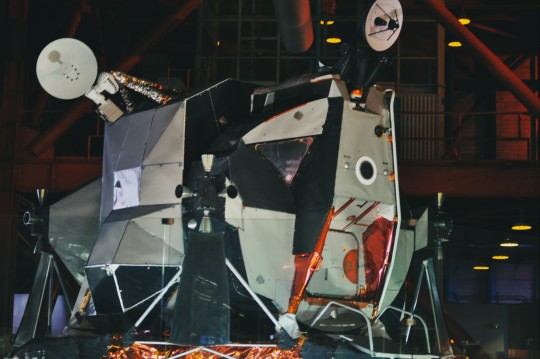
Last of the pics for now until I get some others processed, but I also really like how this one of the LM at the Apollo-Saturn V center came out. This is the only fully intact leftover LM from Apollo, having been intended for use on Apollo 15. The rover was completed ahead of schedule, and thus a LM capable of accommodating the rover was brought in and this one remained unused. She sits below one of the last remaining Saturn Vs, also unflown. To think, this beautiful, delicate vehicle was almost the Falcon. Now, it's here for us to enjoy.
47 notes
·
View notes
Note
What's your favorite Spacecraft, both real and fictional?
It would be impossible to choose a favorite real spacecraft but my favorite fictional spacecraft is probably the Galaxy Class USS Enterprise NCC-1701-D.

Partly because I love the TNG technical manual and partly because it's just gorgeous. Easily the best looking ship to carry the name.
Some candidates for my favorite real spacecrafts: The Space Shuttle Orbiters (Space Transportation System) (1981-2011). Truly horrendous design. Unsafe, inefficient, but unquestionably gorgeous and utterly iconic, having defined human spaceflight for at least two generations.


You may have a death toll but I can't stay mad at you...
The Apollo Lunar Modules (1969-1972). These babies have a negative death toll, being instrumental in the rescue of the Apollo 13 astronauts and being uninvolved in the Apollo 1 fire. They are also one of two unquestionably iconic U.S. government vehicles designed and built by Grumman with "L" in the name--the other is the USPS Long Life Vehicle.

Skylab. They really did just say "what if we emptied out a rocket tank and turn it into a space station." and it has the dubious honor of being the only space station with a spacious enough volume to test cold-gas EVA-jetpacks and to have a shower. All while having its sun shield and one of its solar panels torn off. It's even large enough that you can run along the outside, and the centrifugal force of your own circular motion is enough to keep you on the walls/floor.
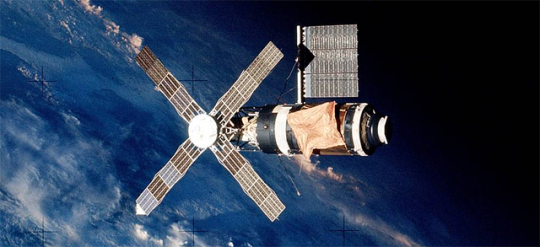


New Horizons (launch 2006, arrival at Pluto 2015, arrival at Arrokoth 2019).
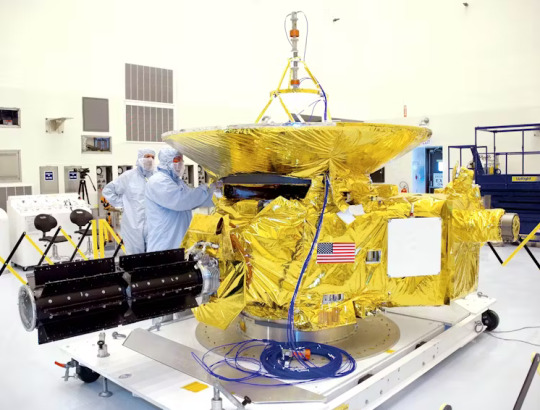


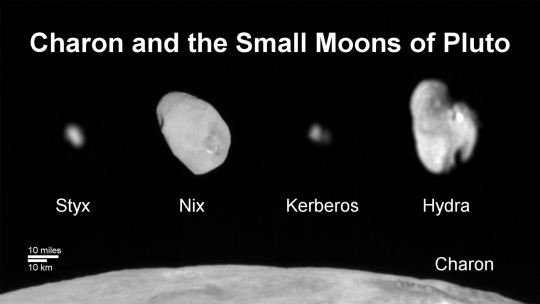
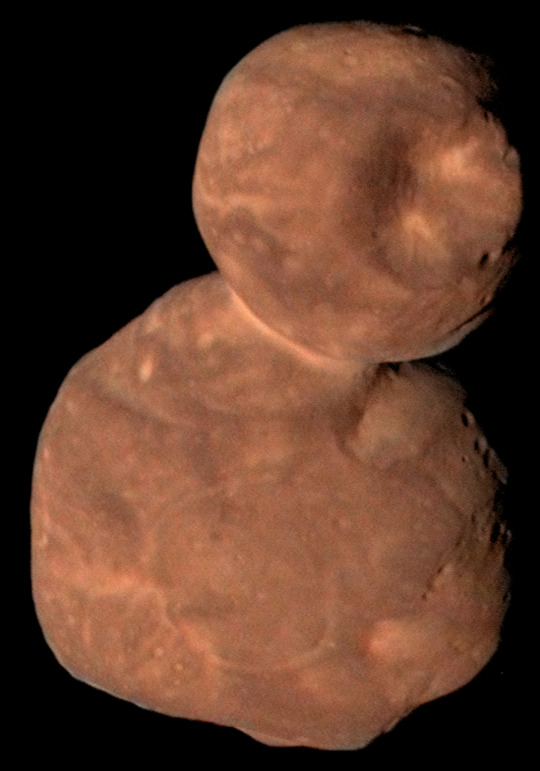
Cassini (launch 1997, arrival 2004, destroyed at end of mission 2017)





and the Voyagers (especially Voyager 2) Launch: 1977 Jupiter: 1979 Saturn: 1980 and 1981 Uranus: 1986 Neptune: 1989 Heliopause: 2012 & 2018 Current status: transmitting from Interstellar space (in terms of heliophysics. Still well within the sun's gravitational sphere of influence)

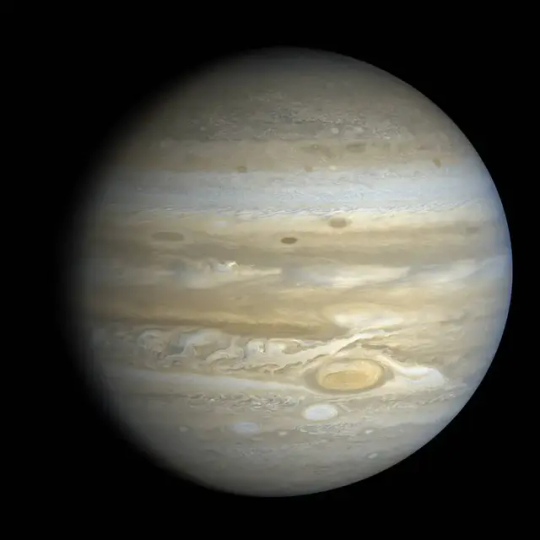



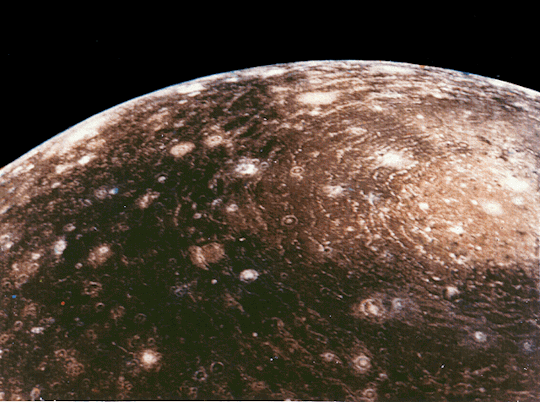

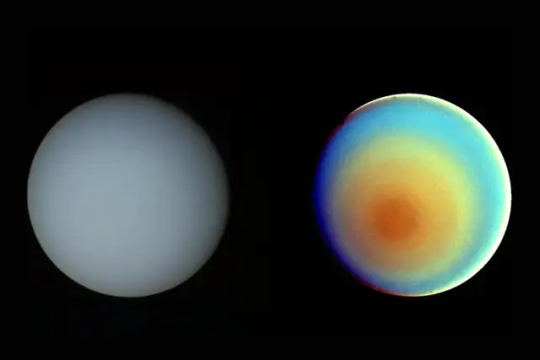

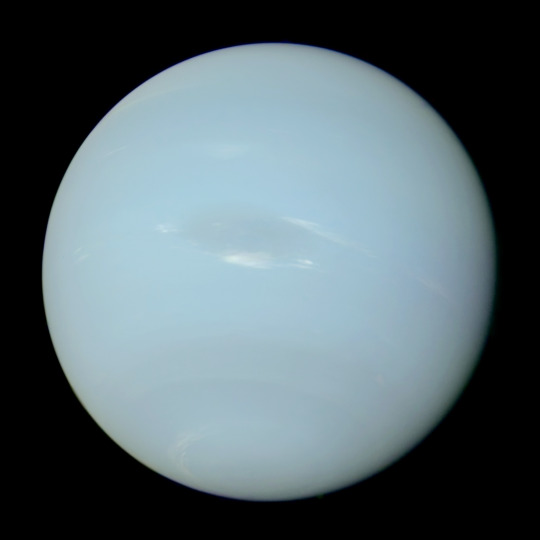

Robotic spacecrafts are the fuckin' best.
#space#space exploration#star trek#spacecraft#spaceship#Voyager spacecraft#Cassini spacecraft#New Horizons spacecraft#outer solar system#solar system#Jupiter#Io#Europa#Ganymede#Callisto#Saturn#Titan#Enceladus#Uranus#Miranda#Neptune#Triton#Pluto#Charon#Arrokoth#Space Shuttle#Apollo 11#Apollo Lunar Module#Lunar Module#Enterprise D
16 notes
·
View notes
Text
GRGGRGHHHAHHH ASTRO SAVE ME
ANYWYAS
Hai gang I'm normal
I was drawing with my partner and friend on whiteboard
Astro doodles and stuff heh




I love them so much I'm going to go insane
#dw astro#dw#dandy's world astro#dandy's world fanart#dandys world#dandy's world Veestro#veestro#lunar module#(ship name me & partner made)#going insane#whiteboard fox#whiteboard
20 notes
·
View notes
Text
⬆️🔊🌚**dramatic music**
11 notes
·
View notes
Text
GETTING TO THE MOON

On the Apollo missions, the lunar module was in a compartment stage beneath the command module engines. Once the ship had reached a certain distance, that stage would separate and free the lunar module.

The command module would then dock with the lunar module. The spacecraft then continued on to lunar orbit in thesis configuration.
Upon arrival at the separation point, two astronauts would crawl through a pressurized tunnel from the command module into the lunar module. The third astronaut remained in the command module, orbiting above the moon.

The lunar module then separated and proceeded to its landing point. The lunar module (or LEM - Lunar Excursion Module, as it was referred to at this point) became home for the two astronauts during their brief stay on the moon.
-Apollo 11 stayed 21 hrs 36 mins
-Apollo 12 stayed 31.6 hrs
-Apollo 13 never landed
-Apollo 14 stayed 33 hrs
-Apollo 15 stayed 67 hrs
-Apollo 16 stayed 71 hrs
-Apollo 17 (the last men on the Moon) stayed just seconds shy of 75 hrs.

For departure the top half of the LEM, or ascent stage, would fire its rockets and ascend into lunar orbit to rendezvous with the command module. The descent stage was left behind on the lunar surface.
Once the ascent stage had docked with the command module the astronauts would transfer back. The ascent stage was then jettisoned, and all three astronauts rode the command module back to Earth to splashdown somewhere in the ocean.
Just a reminder of what REAL astronauts experienced back in the day. Meanwhile, in present times, everyone seems to be going ga-ga over a bunch of celebrities who central high and experienced a brief moment of zero-G.
#Apollo#command module#lunar module#LEM#Lunar Excursion Module#moon landing#it's real!#NASA#space travel#real space travel
9 notes
·
View notes
Text

When North American Rockwell builds a spacecraft, North American Rockwell builds a spacecraft.
#vintage advertising#north american rockwell#nasa#apollo#spacecraft#apollo command module#apollo service module#saturn rocket#rockets#lunar module#moon landing#the 60s#engineering#rocketdyne
62 notes
·
View notes
Text

Commander Neil Armstrong and lunar module pilot Buzz Aldrin landed the Apollo Lunar Module Eagle on July 20, 1969, at 20:17 UTC, and Armstrong became the first person to step onto the Moon's surface six hours and 39 minutes later, on July 21 at 02:56 UTC. Aldrin joined him 19 minutes later, and they spent about two and a quarter hours together exploring the site they had named Tranquility Base upon landing.
13 notes
·
View notes
Text
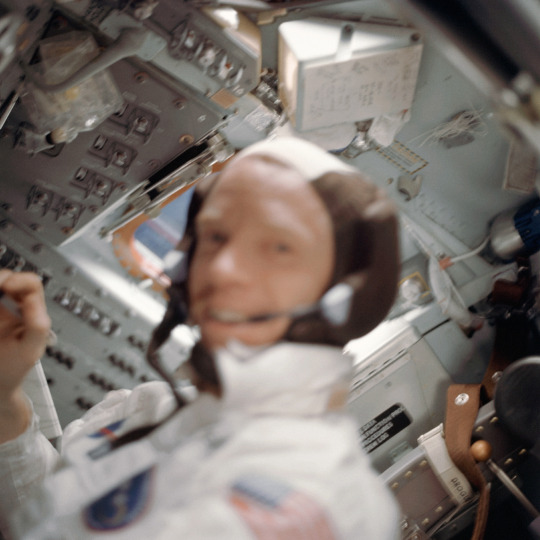
Astronaut Russell Schweickart, Apollo 9 Lunar Module pilot, photographed inside Lunar Module "Spider" during the Apollo 9 earth-orbital mission.
Photo credit: NASA.
#Russell Schweickart#NASA#space exploration#space travel#space mission#space#cosmos#universe#lunar module#adventure
14 notes
·
View notes
Text

The Apollo 13 Lunar Module (LM-7) descent stage with thermal shielding above the descent engine under construction at Grumman Aerospace Corporation's factory at Bethpage, Long Island, New York.
source
#Apollo 13#Lunar Module#LM-7#Aquarius#NASA#Apollo Program#H-type mission#Construction#Grumman Aerospace Corporation#Grumman#Factory#Bethpage#Long Island#New York
86 notes
·
View notes
Text
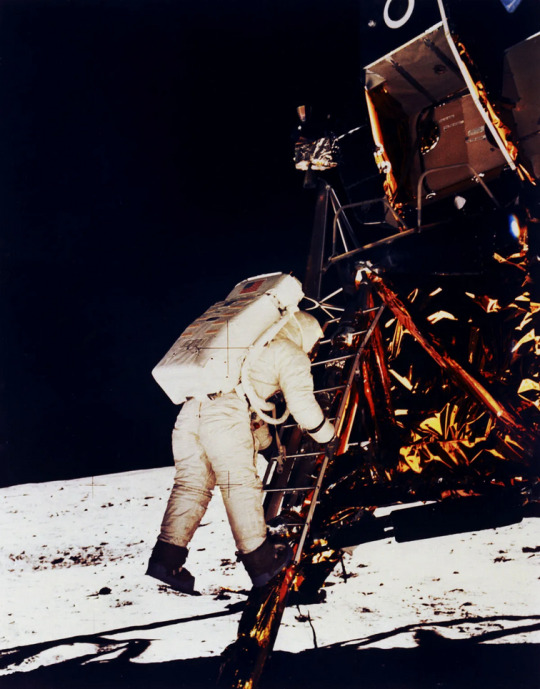
"One giant leap for mankind"
#NASA#Moon landing#Eagle#Lunar module#Neil Armstrong#Astronaut#Lunar landing#moon#spaceflight#Apollo 11#History
46 notes
·
View notes
Text
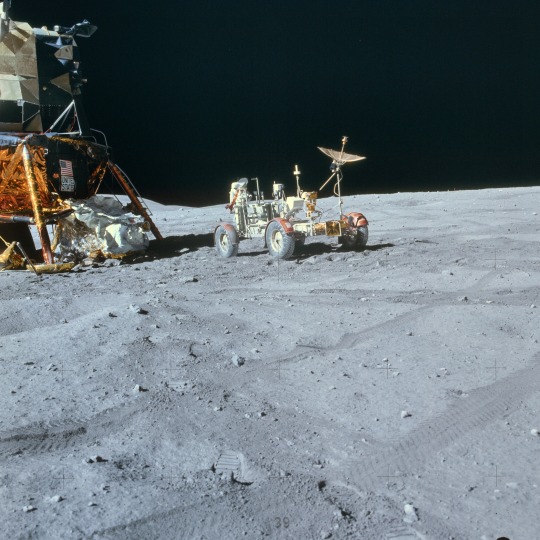
Parked by the front door. The Lunar Rover sits by Orion, the Lunar Module during Apollo 16, Apr 1972. The crew of John Young, Charlie Duke & Ken Mattingly experienced many glitches on the way to the moon culminating in concerns in the main engine. Mission Control had considered aborted the entire landing until it was decided the issues could be overcome. Still, as a result of these concerns, the mission ended 1 day earlier than planned.
#astronauts#apollo 16#space travel#astronaut#space exploration#nasa#space race#space#vintage space#moon landing#space age#1972#lunar rover#man on the moon#moon landings#1970s#lunar module#lunar surface#the moon#nasa astronauts#nasa photos#outer space#space history#space program
44 notes
·
View notes
Text

Finished the LM mini building block kit from KSC!
19 notes
·
View notes
Video
Descent to Fra Mauro by NASA on The Commons Via Flickr: This North American Rockwell artist's concept depicts the Apollo 13 Lunar Module (LM) descending to the Fra Mauro landing site as the Command and Service Module (CSM) remains in lunar orbit. Astronaut Thomas K. Mattingly II, the command module pilot, was to photograph the LM's descent from the CSM. For what was to be NASA's third lunar landing mission, astronauts James A. Lovell Jr., commander, and Fred W. Haise Jr., lunar module pilot, were to descend in the LM to explore the Moon. Mattingly was bumped from the crew three days before launch after being exposed to German measles, with backup command module pilot John "Jack" Swigert taking his place. Apollo 13 launched on April 11, 1970, with little fanfare. But two days into the mission, an oxygen tank onboard exploded, transforming Apollo 13 into a tense rescue mission that hinged on the ingenuity and grit of the crew, mission control, and NASA engineers. NASA Media Usage Guidelines Credit: NASA Image Number: S70-31898 Date: March 20, 1970
#artwork#artist depiction#artist conception#Moon#Moon Landing#Fra Mauro#Command Module#Lunar Module#apollo 13#Lunar Landing#painting#flickr#Mecha#Spacecraft#NASA
6 notes
·
View notes
